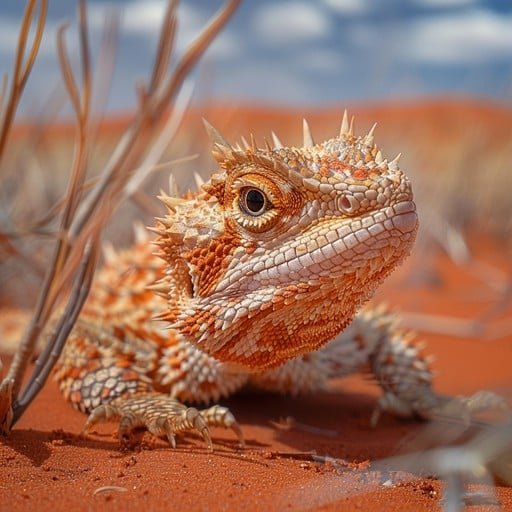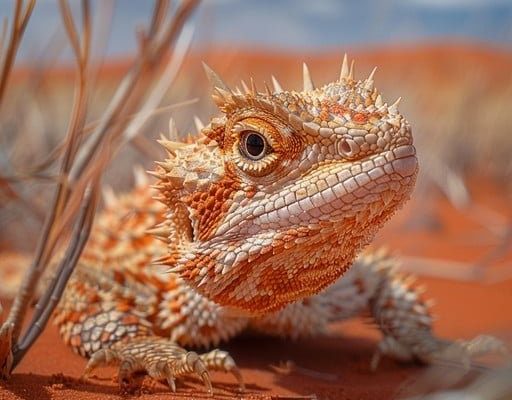
These lizards, often found in arid regions across North America, are a perfect example of nature’s ingenuity. They’re not just cute with their spiky armor and alien-like features; they’re survival experts. So, how do horned lizards navigate their tough environments and come out on top? Let’s explore the secrets behind their resilience.
Physical Adaptations That Aid Survival
Horned lizards are equipped with some remarkable physical traits that help them tackle their challenging habitats. Let’s discuss how these adaptations work in their favor.
Armor-Like Skin
First up, let’s talk about their armor-like skin. You might have noticed that horned lizards have a unique, spiky appearance. This isn’t just for show—it serves a purpose! The spikes deter predators, making it less appetizing for hungry birds or small mammals. Imagine wearing a suit of armor—while it might be a bit heavy, it definitely makes you less likely to be picked on in a crowded room.
Additionally, their coloration often blends with the rocky, sandy surroundings, providing excellent camouflage. This ability to hide helps them avoid becoming someone’s lunch. It’s like playing hide-and-seek, but they’ve mastered the art of staying hidden!
Body Temperature Regulation
Another fascinating aspect of horned lizards is how they regulate their body temperature. Living in areas that can heat up quickly, these lizards rely on basking in the sun to warm up and moving to shaded areas when it gets too hot. You might be wondering how they know when to do this, right? Their bodies are designed to sense temperature changes, making them experts at finding that perfect balance.
Being ectothermic, or cold-blooded, they absorb heat from their environment. This means they can be active during the day while conserving energy and staying cool. Just think of them as solar-powered little tanks, soaking up energy from the sun to fuel their adventures!
Diet and Feeding Strategies
Now, let’s dive into what keeps these spiky little guys fed. Horned lizards are primarily insectivores, meaning they feast on insects like ants, beetles, and grasshoppers. Luckily for them, their habitats are often swarming with tasty critters!
The Art of Hunting
Hunting isn’t always easy, though. Horned lizards have developed some clever strategies to catch their food. They rely on a method called sit-and-wait predation. Essentially, they stay very still and wait patiently for unsuspecting insects to wander by. Imagine being a patient fisherman, sitting quietly for hours, only to snag the biggest fish on the line!
Their long, sticky tongues are perfect for snatching up their meals quickly. The moment an insect comes too close, *bam*, it’s gone! This energy-efficient method means less hunting and more time enjoying the sun.
Water Conservation
In harsh environments, finding water can be a real challenge. Horned lizards have adapted to this by getting most of the moisture they need from their food. Plus, they can absorb water through their skin when it rains, almost like a sponge. So, while you might be hunting for a drink on a hot day, these lizards are sipping in their own unique way!
Behavioral Adaptations
Behavior plays a key role in how horned lizards survive, and they’ve mastered some pretty smart strategies for dealing with danger.
Staying Low and Hidden
When faced with a predator, horned lizards don’t just run for their lives. Instead, they often rely on their amazing camouflage to blend in with their surroundings. If you’ve ever played hide-and-seek, you know how important it is to stay low and stay still. They freeze, becoming part of the landscape, making it tough for predators to spot them.
If hiding doesn’t work, some horned lizards can take it a step further and puff up their bodies, appearing larger and more intimidating. This little act of theater helps scare away potential threats—as if to say, “You don’t want to mess with me!”
Unique Defense Mechanisms
But there’s even more to their defense strategies! Some horned lizards can squirt a stream of blood from their eyes when threatened. While it sounds a bit gross, it’s actually an effective way to distract predators and escape. This tactic might seem wild, but it works.
Think about it—when faced with something unexpected, like an unexpected splash, a predator might be momentarily caught off guard, allowing the lizard to slip away.
Habitat and Range
Understanding where horned lizards call home provides more insight into their survival tactics. They primarily inhabit dry, sandy, or rocky areas like deserts, grasslands, and scrublands.
Adapting to Diverse Environments
The incredible range of horned lizards spans across the western United States and into Mexico. Each species has developed unique adaptations suited specifically to its local environment. For example, the Texas horned lizard prefers the sandy soils and cactus-dotted landscapes of Texas, where it can easily find shelter and food.
While they all have similar features, their specific adaptations help them thrive in their unique niches. It’s like different sports teams, each with its own strategies and playbooks to win the game.
The Impact of Climate Change
It’s also worth noting that while horned lizards have impressive survival skills, they’re not invincible. Changes in climate and habitat loss pose challenges. As temperatures rise and landscapes change, their survival tactics may be put to the test. Conserving their habitats is essential to ensure these remarkable reptiles can continue to thrive.
Horned lizards are a fantastic example of how life can adapt and flourish in even the harshest conditions. With their incredible physical traits, clever feeding strategies, and smart behavioral adaptations, they manage to navigate a world that can often be unforgiving.
Next time you think about survival, remember the humble horned lizard. They remind us that even the smallest creatures can have big secrets to surviving against the odds. So, let’s look out for these fascinating little guys and appreciate the unique ways they navigate the wild. After all, the world is a better place when we recognize the wonders around us!

